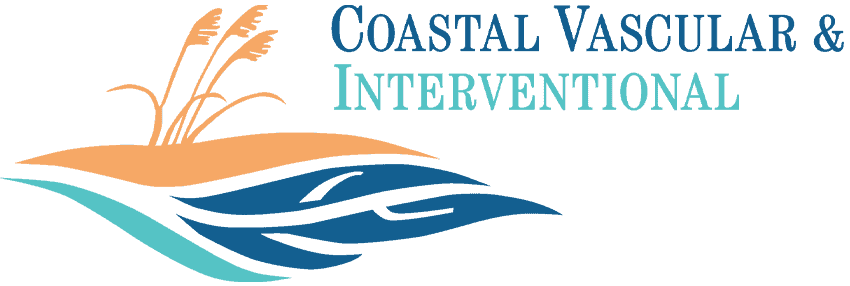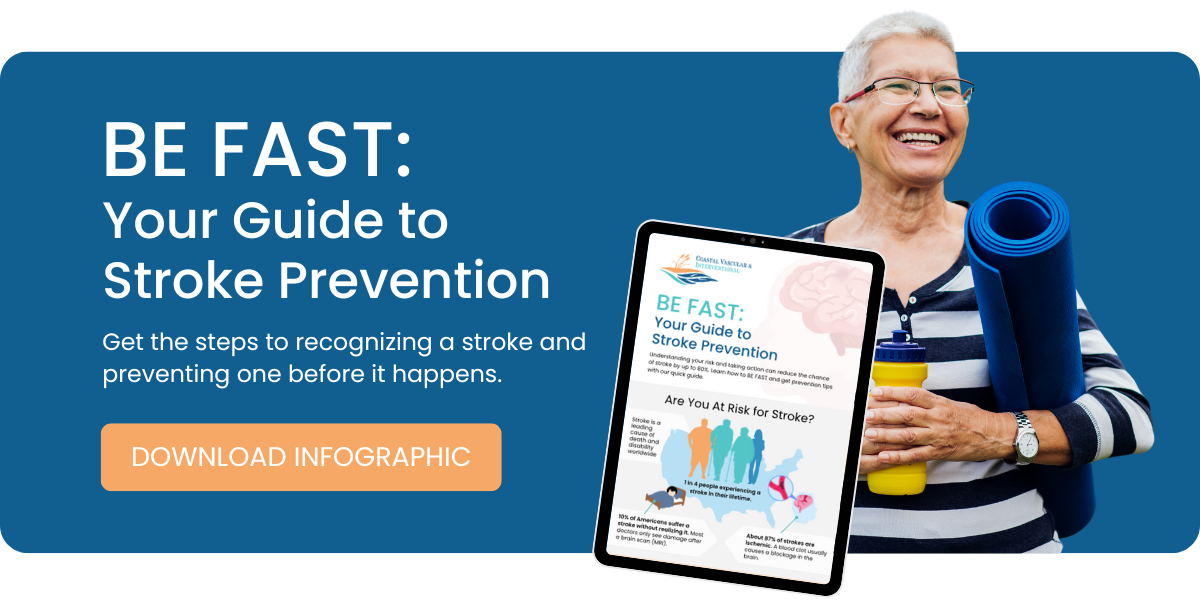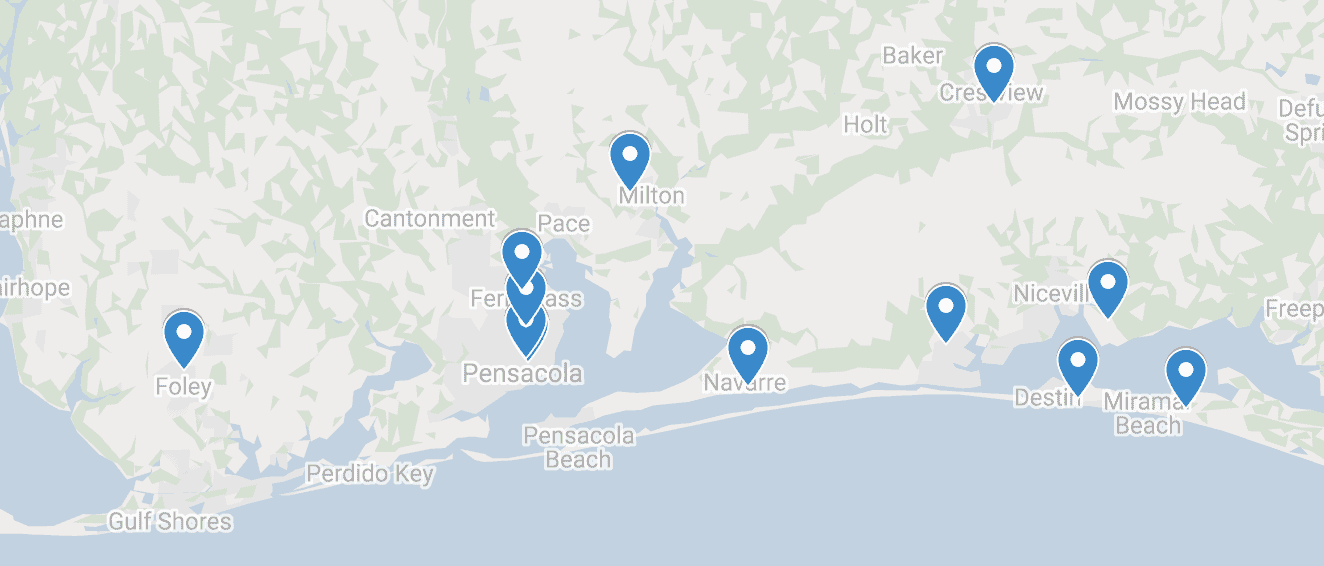Carotid Artery Disease
Learn more about carotid artery disease (CAD), including risks, symptoms, diagnosis, treatment, prevention, and safety.

What is a Stroke?
A stroke occurs when a blood vessel carrying oxygen and nutrients to the brain is blocked by a clot or bursts, causing the brain to starve. If deprived of oxygen for even a short period of time, the brain nerve cells will start to die. Once the brain cells die from a lack of oxygen, the part of the body that section of the brain controls is affected through paralysis, language, motor skills, or vision.
Stroke Risk Factors
- Obesity, high blood pressure and high cholesterol all increase the risk of stroke. These risk factors can be greatly reduced with healthy lifestyles or medication.
- High blood pressure puts pressure on the arteries, making them more susceptible to rupture and more prone to clot formation, which can block the artery.
- High cholesterol can lead to blockage in the carotid artery that takes blood from the neck to the brain. A piece of this plaque can break off and travel to the brain, causing a stroke.
- Obesity can cause high blood pressure and high cholesterol.
- Untreated atrial fibrillation causes the heart’s upper chamber to beat irregularly, which allows the blood pool and clot. If a clot breaks off and enters the bloodstream to the brain, a stroke will occur.
- Sickle cell anemia makes red blood cells less able to carry blood to the body’s tissues and organs, as well as stick to the walls of the blood vessels. These cells can block arteries to the brain, causing a stroke.
- Family history
- Smoking
Stroke Prevalence
- Stroke is the third leading cause of death in the United States, behind high blood pressure and cancer
- Every 45 seconds someone in the United States has a stroke
- Every three minutes someone dies from a stroke

Stroke Symptoms
- Sudden numbness or weakness in the face, arm and/or leg, especially on one side of the body.
- Sudden confusion, trouble speaking or understanding speech.
- Sudden trouble seeing, including double vision, blurred vision or partial blindness, in one or both eyes.
- Trouble walking, dizziness, loss of balance or coordination.
- Sudden severe, headache with no known cause.
If you experience any of these symptoms, even if they go away quickly, seek immediate emergency help.
Every minute counts.
Although starved of oxygen, brain tissue does not die in the minutes following a stroke. If blocked blood vessels can be opened within three to six hours, the chances of recovery are greatly improved.
Carotid Stenting or Endarterectomy
As vascular experts, interventional radiologists and vascular surgeons treat atherosclerosis, “hardening of the arteries,” throughout the body. In some patients, atherosclerosis, specifically in the carotid artery in the neck, can lead to ischemic stroke. Plaque in the carotid artery may result in a stroke by either decreasing blood flow to the brain or by breaking loose and floating into a smaller vessel, depriving a portion of the brain of blood flow. In patients at high risk of having a stroke, the narrowed section of artery may be reopened by a vascular specialist through angioplasty and reinforced with a stent, thereby preventing the stroke from occurring. Vascular stents are typically made of woven, laser-cut or welded metal that permits the device to be compressed onto a catheter and delivered directly into the hardened artery. In addition to diagnosing and treating those at risk for stroke, vascular specialists use their expertise in imaging, angioplasty and stenting to treat those having an acute stroke.
A carotid endarterectomy is a surgical procedure. Performed by a vascular surgeon, this procedure requires an incision to open and remove the plaque from the artery to restore adequate blood flow to the brain. Carotid endarterectomy is considered a long-lasting procedure. Both carotid stenting and endarterectomy procedures will require a yearly follow-up carotid ultrasound to monitor future plaque build-up for stroke prevention.

Accessing Risk of Stroke and Carotid Artery Disease
Your doctor may be able to assess your risk for stroke during a routine physical examination. If your physician suspects that you may be at high risk, he or she will ask if you have experienced symptoms such as numbness or muscle weakness, speech or vision difficulties, or lightheadedness.
By listening to the carotid artery through a stethoscope, the doctor may hear a rushing sound, called a bruit (“brew-ee”) that suggests the artery may be obstructed. A physical exam is not always accurate, however, and further tests may be ordered.
Preventing Strokes
- Stop smoking
- Controlling high blood pressure
- Maintaining healthy weight
- Exercising
- Utilizing appropriate medications like aspirin, prescription drugs like anticoagulants
- Moving around as soon as you’re able following long-term bed rest
- Treating carotid artery disease
- Treating unruptured cerebral aneurysm or arteriovenous malformation

Stroke Statistics & Facts
- Nearly half of all stroke fatalities occur before emergency medical personnel arrive.
- 1.1 million Americans live with disabilities caused by a stroke.
- 600,000 Americans will have a new or recurrent stroke each year—of these, 160,000 will die.
- Stroke is a medical emergency with a narrow time frame for treatment—people should call 911 immediately.
- Strokes can be treated intravenously with the clot-busting drug, tPA (tissue plasminogen activator), if it is given within three hours of the onset of symptoms.
- Persons who have a transient ischemic attack (TIA), also known as a mini-stroke, are likely to have another one. Transient ischemic attacks cause brief stroke symptoms that go away. People often ignore these symptoms, but they are an early warning sign and 35 percent of those who experience a TIA will have a full-blown stroke if left untreated.
- Stroke is not just an older person’s disease—28 percent of strokes occur in people under age of 65.
- More men than women have strokes—although more women die from them.
- African Americans are at much higher risk for stroke. In part, this is because African Americans are at increased risk for obesity, high blood pressure and diabetes, which increase the risk of stroke.
- May is Stroke Awareness Month.
Information posted on this Web site by SIR or Coastal Vascular & Interventional, PLLC should not be considered medical advice and is not intended to replace consultation or discussion with an interventional radiologist or vascular surgeon. It is very important that individuals with specific medical problems or questions consult with their doctor or other health care professional.
“Reprinted with permission of the Society of Interventional Radiology 2004, 2011, www.SIRweb.org. All rights reserved.”



